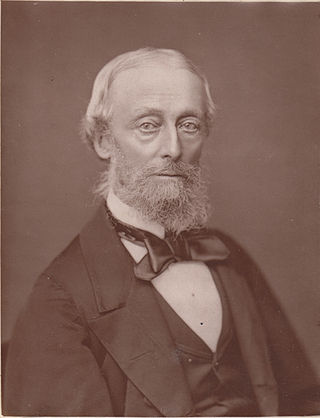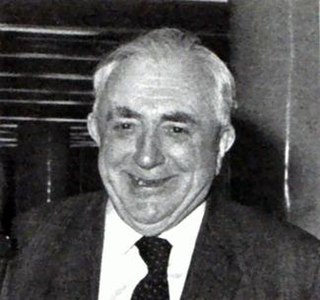Related Research Articles

Philately is the study of postage stamps and postal history. It also refers to the collection and appreciation of stamps and other philatelic products. Philately involves more than just stamp collecting or the study of postage; it is possible to be a philatelist without owning any stamps. For instance, the stamps being studied may be very rare or reside only in museums.

Philatelic literature is written material relating to philately, primarily information about postage stamps and postal history.

The Royal Philatelic Society London (RPSL) is the oldest philatelic society in the world. It was founded on 10 April 1869 as The Philatelic Society, London. The society runs a postal museum, the Spear Museum of Philatelic History, at its headquarters in the City of London.

Illegal stamps are postage stamp–like labels issued in the names of existing independent countries or territories used to defraud postal administrations, stamp collectors, and the general public. Often, but not always, a member nation of the Universal Postal Union (UPU) will have asked the UPU to issue an "International Bureau Circular" advising others of the illegal stamps. According to the UPU, the market is estimated to be at least $500 million per year.

L.N. and M. Williams were a philatelic writing partnership made up of brothers Leon Norman Williams and Maurice Williams (1905–1976).

Sir Edward Denny Bacon was a British philatelist who helped with the enlargement and mounting of collections possessed by rich collectors of his time and became the curator of the Royal Philatelic Collection between 1913 and 1938.

Walter Morley (1863-1936) was a pioneering English philatelist, stamp dealer and philatelic author.

Frederick John Melville was a British philatelist, prolific philatelic author and founder of The Junior Philatelic Society. He was also a founder in 1907 of the Philatelic Literature Society. Melville is a member of the American Philatelic Society's Hall of Fame and was a signatory to The Roll of Distinguished Philatelists in 1921.

The Roll of Distinguished Philatelists (RDP) is a philatelic award of international scale, created by the Philatelic Congress of Great Britain in 1921. The Roll consists of five pieces of parchment to which the signatories add their names.
John Easton was a printer and philatelic author who signed the Roll of Distinguished Philatelists in 1960.

Charles William Viner A.M., Ph.D., was a British philatelist who was a founding member of the Philatelic Society, London, later to become the Royal Philatelic Society London, and who was present at the initial meeting of the society on 10 April 1869, and serving as its Secretary from 1871 to 1874. His obituary in The London Philatelist referred to him as the "Father of Philately" and elsewhere he was described as the vieille garde of philately having been actively collecting and writing about stamps since 1860. In 1921 he was entered on the Roll of Distinguished Philatelists as one of the founding Fathers of philately.

Henry Robert Holmes was the president of the Royal Philatelic Society London 1961-64 and signed the Roll of Distinguished Philatelists in 1953.

Hedwige Alma Lee FRPSL RDP was a Swiss-born naturalised British philatelist who specialised in the stamps of Switzerland and in topical collecting. She won large gold medals for her displays at Naba 1984, Stockholmia 1986, Hafnia 1987 and Finlandia 1988 and her collection was exhibited in the Court of Honour at PhilexFrance 1989 and New Zealand 1990. She signed the Roll of Distinguished Philatelists in 1991 and later became the only non-resident member of the Consilium Philateliae Helveticae. The Royal Philatelic Society London award the Lee Medal in memory of Alma and her husband Ron.
William Reeve Rundell, sometimes Reeves, was an Australian postal officer.

William Thorne was a wealthy American businessman and philatelist. In poor health, he retired early from the leather trade and began to collect postage stamps. He was one of the founders of the Philatelic Society of New York and the second president of the Collectors Club of New York. He was the owner of the unique block of four of the 1869 24¢ United States stamps with inverted center. He sold his collection but restarted in order to provide a distraction from his poor health. He died in 1907 after three operations for what was thought to be throat cancer.
Edward Chauncey Luard was a British planter in Demerara, British Guiana. He was influential among the planter community in British Guiana and was a member of the Court of Policy for East Demerara. He led the campaign to introduce a ballot into the colony's constitution in 1895.
Wolfgang Baldus is a German graphic designer, artist, and philatelic writer. He is known for authoring and publishing books on cinderella stamps in the series History and Background Stories of Unusual Stamps and for his works on the philatelic forgeries and propaganda parodies produced by both sides during the First and Second World Wars.

Adolf Passer FRPSL was an Austrian philatelist and authority on the stamps of Austria, Bosnia and Herzegovina and the Ottoman Empire and Turkey.
John Barefoot is a British philatelist, stamp dealer, and publisher, best known for his catalogues of revenue stamps which are known collectively as the "Barefoot catalogue".

Arthur Linz FAIC, FRPSL, was an American industrial chemist who specialized in the chemistry of molybdenum and its compounds. He was also a noted philatelist who formed leading collections of the stamps and postal history of Finland, Peru, and Turkey, and wrote extensively about his collecting interests. He formed the majority of the Bernard Payton collection of Peruvian stamps and postal history in the Smithsonian National Postal Museum and his collection of Turkish stamps included a block of tête-bêche "tughra" stamps of the Ottoman Empire that has been described as "arguably the most important Tughra item".
References
- ↑ "The Possibility of Forming a Universal Philatelic Union of Philatelic Societies to Discourage Unnecessary or Speculative Issues" by M.P. Castle in The London Philatelist, Vol.19, pp.111-118, 1910.